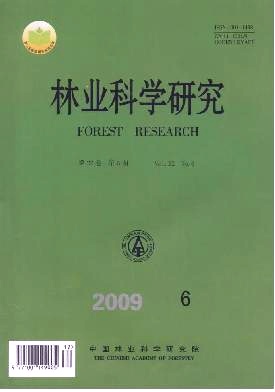|
[1]
|
王绍武,现代气候学研究进展[M].北京:气象出版社,2001
|
|
[2]
|
李延明,张济和,古润泽. 北京城市绿化与热岛效应的关系研究[J].中国园林,2004,20(1):72-75
|
|
[3]
|
倪 黎,沈守云,黄培森.园林绿化对降低城市热岛效应的作用[J]. 中南林业科技大学学报,2007,27(2):36-43
|
|
[4]
|
Li Jiahong.Study of relation between land-cover condition and temperature based on landsat TM Data[J].遥感技术与应用,1998,13(1):18-28
|
|
[5]
|
武佳卫,徐建华,谈文琦.上海城市热场与植被覆盖的关系研究[J]. 遥感技术与应用,2007, 22(1):26-30
|
|
[6]
|
李俊祥,宋永昌,傅徽楠.上海市中心城区地表温度与绿地覆盖率相关性研究[J].上海环境科学,2003,22(9):599-601
|
|
[7]
|
冯 欣,应天玉,李明泽, 等.哈尔滨市热岛效应与绿色空间消长的关系[J].东北林业大学学报,2007, 35(5):55-56
|
|
[8]
|
Shanshua-Bar L.Hoffman M E.Vegetation as a climatic component in the design of an urban street: empirical model for predicting the cooling effect of urban green areas with trees[J].Energy and Buildings,2000,31:221-235 |
|
[9]
|
King A W, With K A. Dispersal success on spatially structured landscapes: when do spatial pattern and dispersal behavior really matter? [J]. Ecological Modelling, 2002,147(1):23-39 |
|
[10]
|
Makoto Y,Robert D,Yoshitake K,et al.The cooling effect of paddy fields on summertime air temperature in residential Tokyo,Japan[J].Landscape and Urban Planning,2001,53(1-4):17-27 |
|
[11]
|
周志翔,邵天一,唐万鹏,等.城市绿地空间格局及其环境效应——以宜昌市中心城区为例[J]. 生态学报,2004,24(2):186-192
|
|
[12]
|
马勇刚,塔西甫拉提·特依拜,黄 粤,等.城市景观格局变化对城市热岛效应的影响——以乌鲁木齐市为例[J]. 干旱区研究,2006,23(1):172-176
|
|
[13]
|
马雪梅,张友静,黄 浩.城市热场与绿地景观相关性定量分析[J]. 国土资源遥感,2005(3): 10-13
|
|
[14]
|
岳文泽,徐丽华.城市土地利用类型及格局的热环境效应研究——以上海市中心城区为例[J]. 地理科学,2007,27(2):243-248
|
|
[15]
|
徐丽华, 岳文泽.城市公园景观的热环境效应[J]. 生态学报,2009,28(4):1702-1710
|
|
[16]
|
王 勇,李发斌,李何超,等.RS与GIS支持下城市热岛效应与绿地空间相关性研究[J]. 环境科学研究,2008,21(4):81-87
|
|
[17]
|
武小钢,蔺银鼎,闫海冰,等.城市绿地降温增湿效应与其结构特征相关性研究[J]. 中国生态农业学报, 2008,16(6):1469-1473
|
|
[18]
|
陈云浩,王 洁,李晓兵.夏季城市热场的卫星遥感分析[J]. 国土资源遥感,2002(4):55-59
|
|
[19]
|
陈 峰,何报寅,龙占勇,等.利用Landsat ETM+分析城市热岛与下垫面的空间分布关系[J]. 国土资源遥感,2008(2):56-67
|
|
[20]
|
Streutker D R.A remote sensing study of the urban heat island of Houston,Texas[J].International Journal of Remote Sensing,2002,23(13):2595-2608 |
|
[21]
|
周红妹,周成虎,葛伟强.基于遥感和GIS的城市热场分布规律研究[J].地理学报,2001,56(2):189-197
|
|
[22]
|
Riitter K H,O'Neill R V,Hunsaker C T.A factor analysis of landscape pattern and structure metrics[J].Landscape Ecol,1995,10(1):23-39 |
|
[23]
|
布仁仓,胡远满,常 禹,等.景观指数之间的相关分析[J]. 生态学报,2005,25(10):2764-2775
|
|
[24]
|
O'Neill R V,Riitters K H,Wickham J D,et al. Landscape pattern metrics and regional assessment[J]. Ecosystem Health,1999,5(4):225-233 |
|
[25]
|
胡华浪,陈云浩,宫阿都.城市热岛的遥感研究进展[J]. 国土资源遥感,2005(3):5-13
|





 DownLoad:
DownLoad: